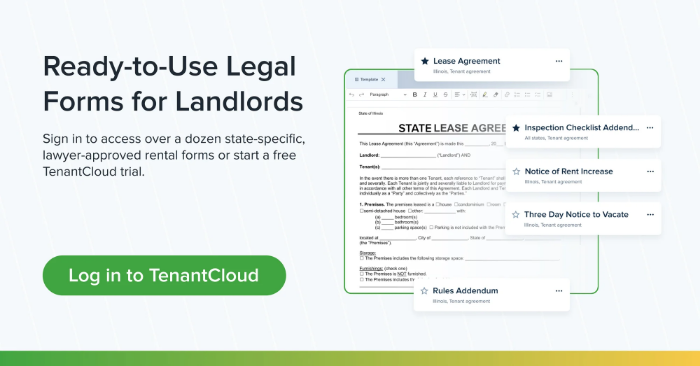Are you a tenant facing an unexpected move or a landlord trying to keep your rental property in good hands? If so, subletting can offer the flexibility you need, as long as it’s done right. As more renters embrace remote work, travel, or short-term commitments, subleasing is becoming a go-to option across the country. For landlords learning how to manage a rental property, understanding subletting is a must to protect your investment.
But with that flexibility comes plenty of questions: What is a sublet? How does a subletting agreement work? Who’s responsible if something goes wrong? And how do you choose a subtenant you can actually trust?
In this guide, we’ll walk you through everything from legal basics to smart screening strategies, so both landlords and tenants can feel confident navigating a subletting arrangement. Because when expectations are clear and the right systems are in place, subletting doesn’t have to be a hassle. In fact, it could be a win for everyone.
What Is a Sublet Agreement?
Subletting might sound simple—one person moves out, another moves in—but there’s a bit more to it beneath the surface. So, what exactly is a sublet agreement?
A sublet agreement, or a sublease agreement, is a legal document that lets a primary tenant (also called the sublessor) rent all or part of their rental property to someone else—a sublessee—for a portion of the original lease term. The original tenant doesn’t step out of the picture. Instead, they remain on the lease and are ultimately responsible to the landlord for the property, rent payments, and any damages that may occur.
This makes subletting different from a lease assignment, where the entire lease (and all legal responsibility) transfers to a new tenant. With a sublease, the original lease agreement stays in place, and the landlord may still need to approve it, depending on the sublease clause in the contract.
In most residential situations, not to be confused with commercial space rentals, subleasing can be a smart way to stay flexible without breaking your lease. But it does require clear documentation, good communication, plus a mutual understanding between all parties involved.
The bottom line is that a sublet agreement protects everyone. It outlines the expectations, duration, and responsibilities involved, so tenants, subtenants, and landlords can move forward with clarity and confidence.
Why Tenants Choose to Sublet
Life moves fast. Sometimes, even faster than your lease. It could be a new job in another city, an unexpected family need, or a semester abroad. Regardless, many renters find themselves needing to leave their rental home before their lease term is up. That’s where subletting steps in.

For the original renter, choosing to sublet is often the best way to avoid early lease termination fees or the financial strain of paying for a place they’re no longer living in. It can also be a strategic way to manage a monthly rent that’s too high to handle alone, especially when sharing a rental unit with a roommate who suddenly moves out.
Sometimes, subletting helps renters maintain their hold on a great rental property while they travel or take on short-term assignments. It’s also increasingly popular in cities where flexible housing is essential. Subletting has become a legal and practical workaround for many situations.
While every sublet comes with responsibilities, for many tenants, it’s a valuable option that offers breathing room without breaking the existing lease.
How to Choose a Subtenant
If you’re considering subletting, selecting the right person to live in your space is crucial for landlords reviewing a subletting request or a sublessor seeking to fill a room. Knowing how to choose a subtenant can make or break the experience for everyone involved.
Start with tenant screening. No matter how friendly or well-connected a potential tenant may seem, you need more than a gut feeling. Use a thorough process that includes a rental application, proof of income, personal references, and a credit check. This gives you a clear picture of whether a potential subtenant is financially responsible and likely to treat the rental unit with respect.
For extra peace of mind, use online tenant screening tools. These platforms can quickly provide insights into rental history, background checks, and more, so you’re not flying blind.
But screening isn’t just about numbers. An interview, whether in person or virtual, can tell you a lot about whether the person is a good fit. Ask questions like:
- Why are you looking for a short-term rental?
- What’s your typical day-to-day routine?
- Have you ever been late on a rent payment?
- Can you provide contact info for your previous landlord?
If you’re subletting part of a shared space, like a bedroom in a multi-room apartment, be sure to introduce the potential subtenant to any existing tenants. Compatibility with roommates can make or break a sublease situation, so have honest conversations upfront: discuss noise levels, cleaning habits, guests, and pets. Whatever matters most in your shared living dynamic.
Next, don’t skip the security deposit. Just like a standard rental agreement, a sublease agreement should include a deposit amount, the terms for refund, and what counts as damage. If anything goes wrong—unpaid rent, broken appliances, or major wear and tear—you’ll be glad you managed the financial expectations from the beginning.
And finally, renter’s insurance. Some tenants assume their policy covers everything during a sublease, but that’s not always the case. It’s smart to ask the subtenant to get their own coverage. That way, if something unexpected happens, there’s a safety net for both the primary tenant and the landlord.
In short, choosing the right subtenant comes down to doing your homework and having open conversations. Take your time, document everything, and don’t be afraid to say no if something feels off. A solid screening process today saves a mountain of stress down the road and helps make your subletting experience smooth, safe, and successful.
The Top Five Best Practices for a Subletting Arrangement
Subletting doesn’t have to be complicated, as long as you follow a few key steps from the start. A solid subletting arrangement protects everyone involved: the current tenant, the subtenant, and the landlord. Here are five best practices that will help keep things clear and compliant.
1. Start with the Lease and Local Laws
Before anything else, read your lease agreement carefully. Some leases include a sublease clause that outlines whether subleasing is allowed and under what conditions. Even if the lease is silent, local rental laws may govern what’s permitted. Knowing your rights and limits upfront is step one in creating a subletting legal setup.
2. Get Landlord Approval
Always get written permission from the landlord before subletting. This is your legal safeguard. Share your timeline, outline your plans, and offer to provide the subtenant’s information before they move in. Keeping the property owner in the loop builds trust and prevents issues down the road.
3. Draft a Clear Sublease Agreement
A formal sublease agreement is a must. It should spell out the lease term, monthly rental payments, utility responsibilities, and house rules. Be sure to clarify what the sublessor (original tenant) is responsible for versus what the subtenant agrees to handle. This extra step will prevent miscommunication later.
4. Document the Apartment’s Condition
Before handing over the keys, don’t forget to take time-stamped photos and note the condition of every room. Store these in your records or within a property management platform. If any damage happens during the subletting arrangement, you’ll have documentation to back up deposit claims.
5. Maintain Open Communication
From the day your subtenant moves in to the day they leave, keep the conversation flowing with both them and your landlord. Address small issues early, confirm rent payments on time, and don’t assume anything. Open communication is one of the most underrated but necessary tools in a successful sublet.
Following these steps turns a stressful move into a smooth transition, keeping your lease, finances, rental property, and rental income protected.
What Landlords Should Know About Subleases
For any landlord, subletting can feel like a loss of control. But it doesn’t have to be. With the right systems in place, a sublease can protect your property and still offer flexibility to your tenants.
The first line of defense is a clearly written sublease clause is included in every lease agreement. This gives you the authority to approve or deny subletting requests and ensures your expectations are legally backed. If your current leases don’t address subleasing, it’s time for an update!
The most significant risk to your real estate portfolio isn’t subletting. It’s unauthorized subletting. When you’re not aware of who’s living in your rental property, you lose visibility, control, and protection.
By being proactive and using smart tools, you can stay informed, keep units occupied, and avoid costly surprises, all while supporting tenants through life’s inevitable changes.
Sublease vs Lease Assignment: What’s the Difference?
It’s easy to confuse a sublease with a lease assignment, but they’re not the same, and the difference matters.
In a sublease, the primary tenant (also called the sublessor) brings in a new tenant—the subtenant—who lives in the unit and pays rent. However, the original lease agreement remains in place, and the sublessor is still legally responsible to the landlord for rent, damages, and adherence to the lease terms.
With a lease assignment, on the other hand, the entire lease is transferred to the new tenant. The original renter steps out completely, and the incoming tenant becomes fully responsible to the landlord, with no intermediary.
For clarity and protection, landlords should specify in their standard residential lease agreement whether subleasing, lease assignments, or both are permitted, and under what conditions. That small clause can make a big difference in managing a rental property smoothly.
Make Subletting Easier with TenantCloud
Subletting doesn’t have to be a headache. Set expectations early, put your subletting agreement in writing, and make sure everyone—landlord, tenant, and subtenant—is on the same page.
With TenantCloud, you can simplify every part of the process. From creating and storing your sublease agreement to tracking rent payments and messaging tenants in real time, our platform is built to take the stress out of subletting.
Explore our related articles, posts, and tools to put best practices into action so that you can protect your lease, your rental property, and your peace of mind. Sign up for our free trial today to see how TenantCloud can support your business!








